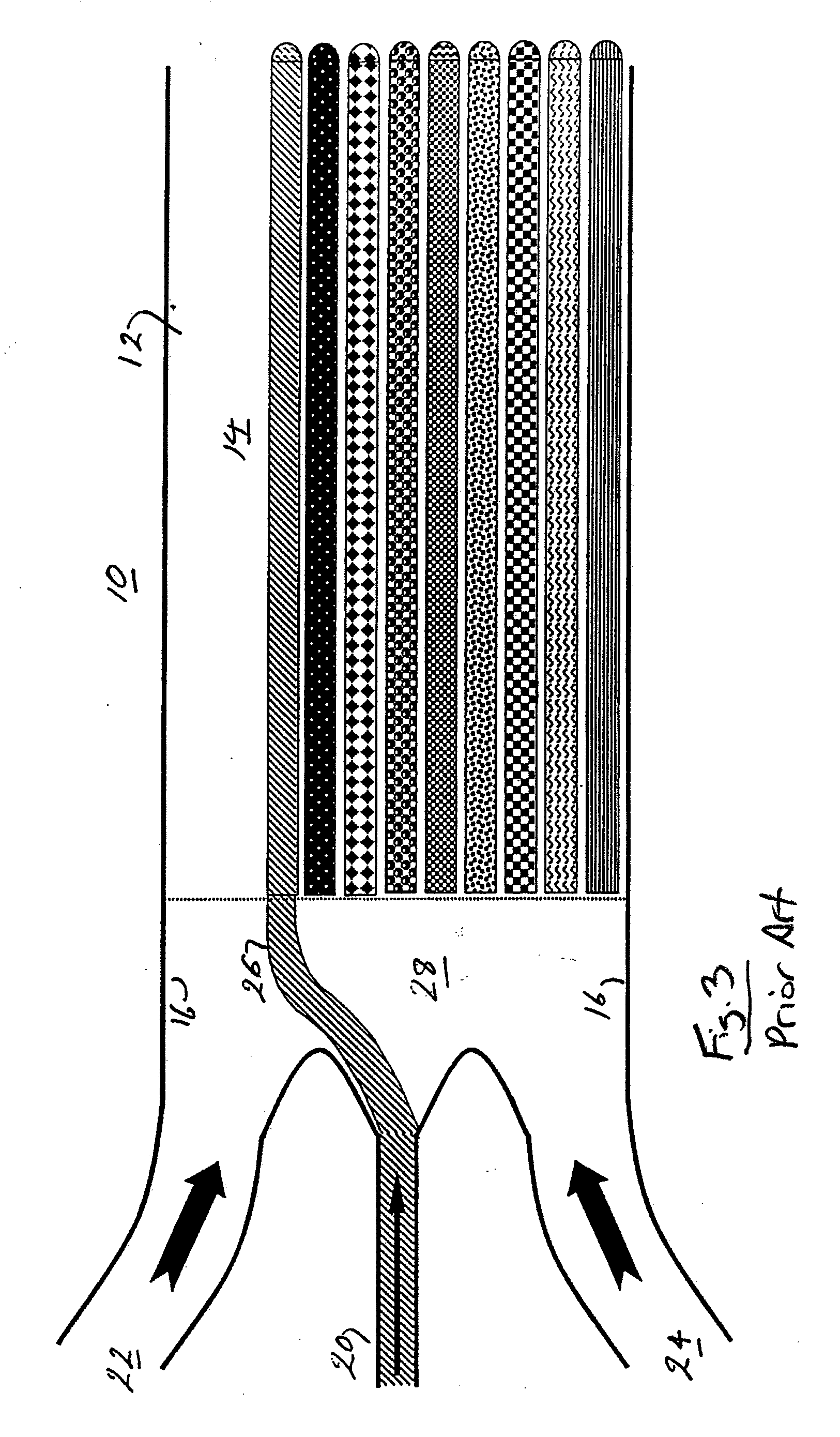Hydrodynamic Isolation Method and Apparatus
a technology of hydrodynamic isolation and apparatus, applied in the direction of positive displacement liquid engines, laboratory glassware, instruments, etc., can solve the problems of inability to accurately determine the kinetic rate, unsatisfactory structures and methods, and difficult manufacturing and breakage. , the effect of small array of microfluidic devices
- Summary
- Abstract
- Description
- Claims
- Application Information
AI Technical Summary
Benefits of technology
Problems solved by technology
Method used
Image
Examples
first embodiment
[0047]In the flow cell 100 shown in FIGS. 5-10, the fluid delivery surface 104 is designed such that two main inlet ports 112 are positioned at one end of the fluid delivery surface 104, and a single outlet, or main exhaust port 114 is positioned at the opposing end of the fluid delivery surface 104. During operation of the flow cell 100, continuously flowing guide fluid streams enter the cell through the main inlet ports 112 and, in most instances of operations, will exit the cell 100 through the main exhaust port 114. This design ensures that all fluids entering the cell 100 will flow in a direction from the end of the flow cell 100 where the main inlet ports 112 are located towards the end of the flow cell 100 where the main exhaust port 114 is located. When describing its position within the flow cell 100, the exhaust port 114 is said to be located downstream of the main inlet ports 112. Additionally, the number of inlet ports 112 and outlet ports 114 can be altered as desired, ...
third embodiment
[0069]Looking now at FIG. 18, the flow cell 1000 of the present invention is illustrated in which the flow cell 1000 is capable of location specific addressing of sample fluid streams over a two (2) dimensional sensor spot array 1050 formed in the flow cell 1000. The flow cell 1000 includes sensor spots 1010 oriented in a grid-like pattern 1040 to form an array 1050, similarly to the flow cell 200, with a corresponding set of fluid ports 1008, i.e., fluid inlets 1012, fluid outlet 1014, RIPs 1018 and REPs 1022, 1026, oriented along each column of the spot array 1050. However, the flow cell 1000 also includes an additional set of fluid ports 1008′ disposed along each row of the spot array 1050 and oriented generally perpendicular to the set of fluid ports 1008 disposed along the columns of the array 1050. The various apertures forming the row sets 1008′, i.e., the fluid inlets 1012′, fluid outlet 1014′, RIPs 1018′, and REPs 1022′, 1026′, function identically to the corresponding memb...
PUM
| Property | Measurement | Unit |
|---|---|---|
| volumes | aaaaa | aaaaa |
| transparent | aaaaa | aaaaa |
| volumes | aaaaa | aaaaa |
Abstract
Description
Claims
Application Information
 Login to View More
Login to View More - R&D
- Intellectual Property
- Life Sciences
- Materials
- Tech Scout
- Unparalleled Data Quality
- Higher Quality Content
- 60% Fewer Hallucinations
Browse by: Latest US Patents, China's latest patents, Technical Efficacy Thesaurus, Application Domain, Technology Topic, Popular Technical Reports.
© 2025 PatSnap. All rights reserved.Legal|Privacy policy|Modern Slavery Act Transparency Statement|Sitemap|About US| Contact US: help@patsnap.com



